To Montserrat Monastery
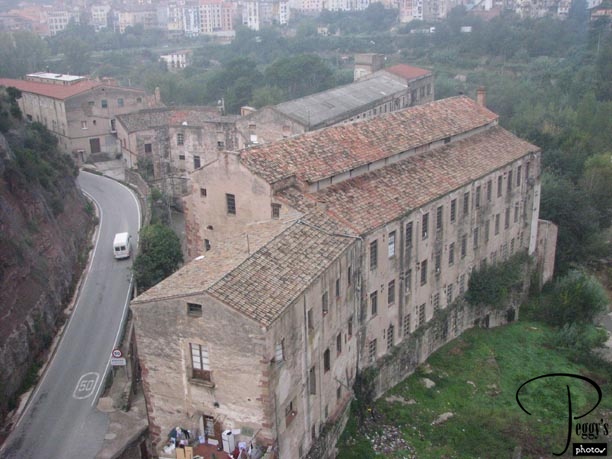
o Barcelona take. You can easily get there on your own and there is an advantage as to why not to take an escorted tour there (explained later). As we started out in the morning before most of Barcelona was awake and the streets and subways had few tourists on them, we took a taxi from our hotel to the metro station at Placa Espanya. At the station, you simply follow the signs saying Montserrat. Then you will find automatic ticket machines from which to buy your ticket to Montserrat. If you look confused, as we must have, someone will come to help you. With help, we each bought a 34 euro Tot Montserrat round–trip ticket which included the train to the Montserrat station, either a cable car or mountain train ride up to and down from the monastery, unlimited funicular rides, museum entrance, and a self–serve lunch. There are two Montserrat stations––if you are going to take the cable car up, you get off at the first station; if you are going to take the Cremallera mountain train up, you get off at the second station. We got off at the second station. Photo: Arriving at the town of Montserrat.

To Montserrat Monastery
To Montserrat Monastery
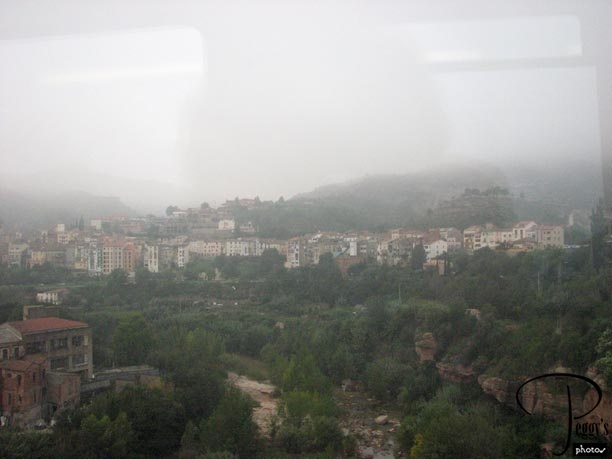
View of the town of Montserrat and the fog. The architectural styles are different here from what we have so far seen in Spain.

To Montserrat Monastery
To Montserrat Monastery
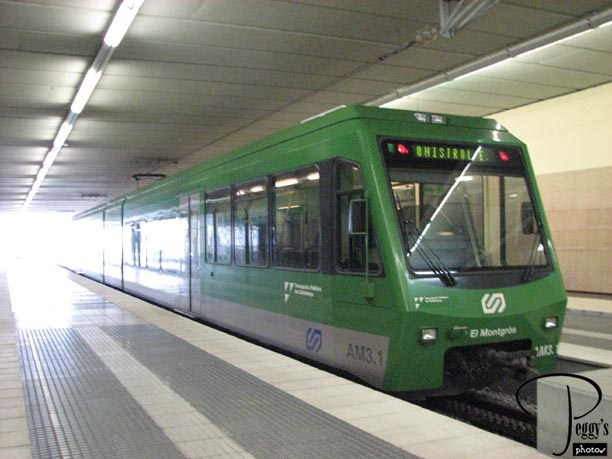
It was an hour train ride from Barcelona to Montserrat. When you get off at the second station, you then transfer to the Cremallera mountain train, which first makes a stop at another station before proceeding up the mountain. Photo: the Cremallera mountain train.

To Montserrat Monastery
To Montserrat Monastery
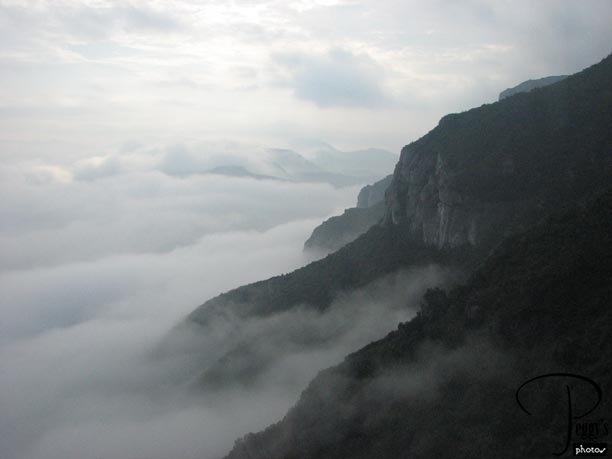
Going up the mountain, definitely a thrill ride as the train tracks were right on the edge of the cliffs.

To Montserrat Monastery
Arriving at the Montserrat Monastery
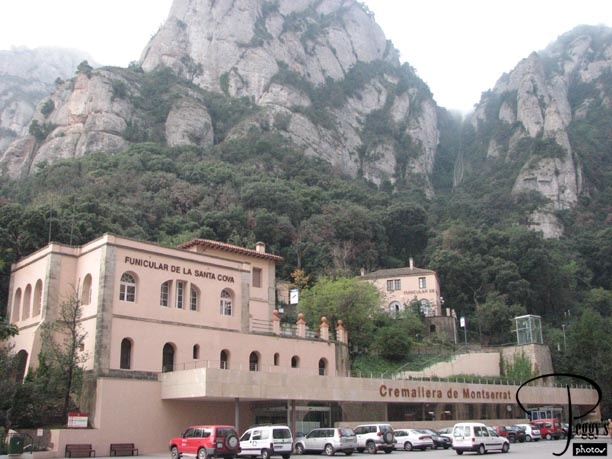
The train and funicular stations at the top of the mountain.

Arriving at the Montserrat Monastery
The Montserrat Monastery
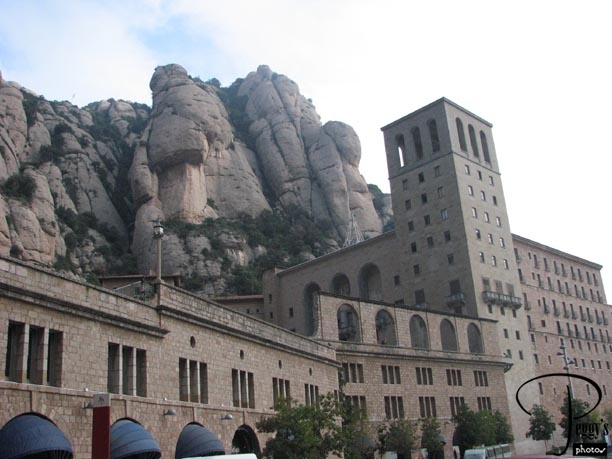
The monastery at Montserrat (Montserrat means “serrated mountain”). The rock formations here reminded me of the rock formations on which the monasteries of Meteora in Greece are located (on this website, My Albums, page 15, Greece/Turkey, Day 16). The first monks, about 900 A.D., built huts here, and then a monastery in 1025. In 1811, the monastery was destroyed by the French during the War of Independence. They killed the monks as well. In 1844, a new monastery was built. The Montserrat Monastery has served as a shrine for over 1000 years. Today, there are still 13 occupied hermitages dotting the mountains.

The Montserrat Monastery
The Montserrat Monastery
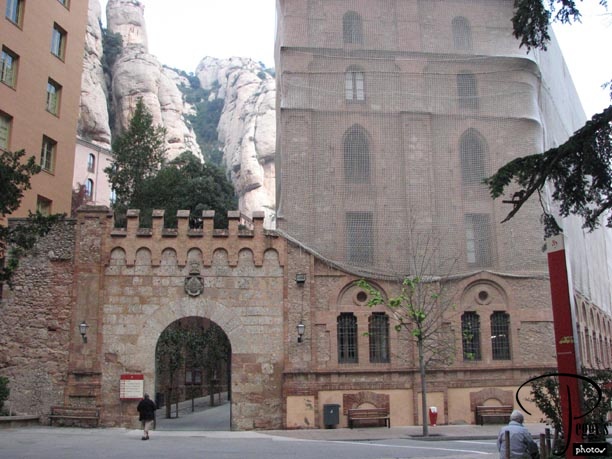
There weren’t many tourists here yet, so Merrie and I walked up to view the Montserrat Basilica before it became crowded. We walked up through the arch in the photo

The Montserrat Monastery
The Montserrat Monastery
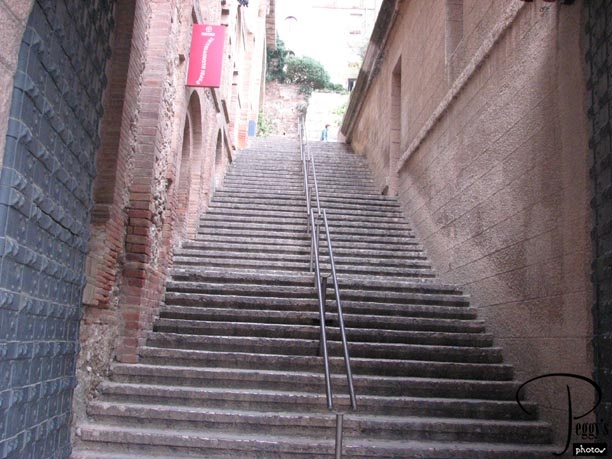
Then up these stairs.

The Montserrat Monastery
The Montserrat Monastery
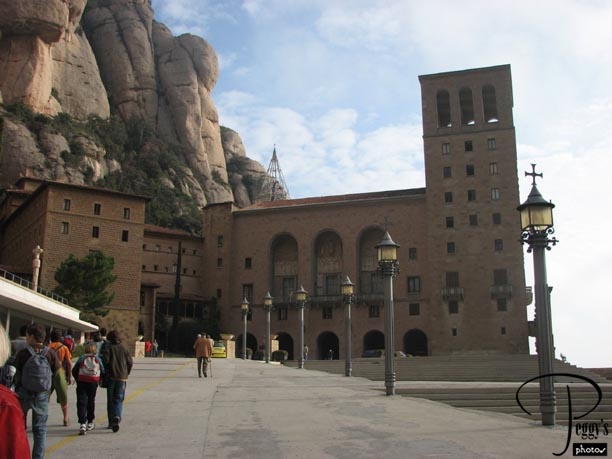
To the plaza. The entrance to the basilica is through an arch in the middle.

The Montserrat Monastery
The Montserrat Monastery
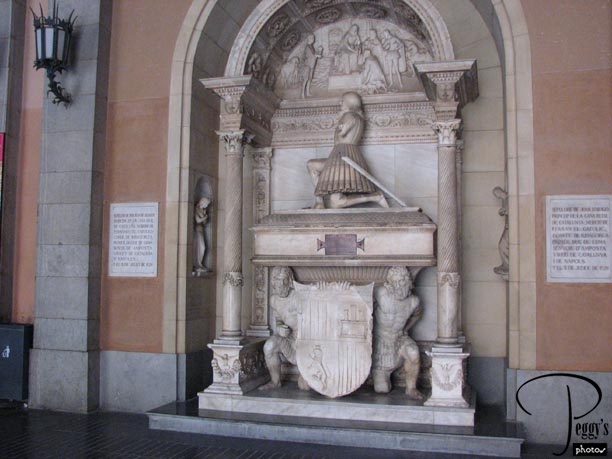
Statues seen on the way to the basilica.

The Montserrat Monastery
The Montserrat Monastery
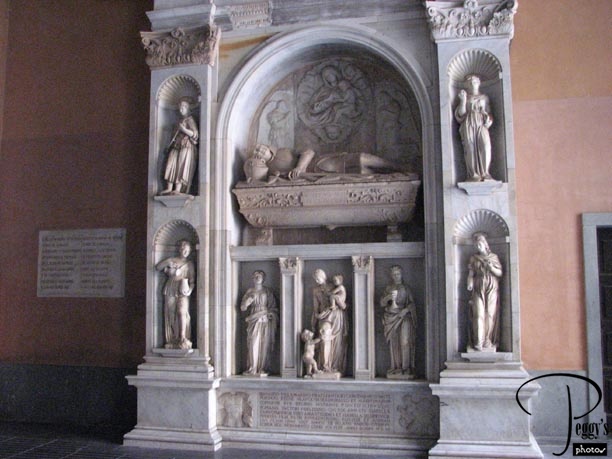
More statues.

The Montserrat Monastery
The Montserrat Monastery
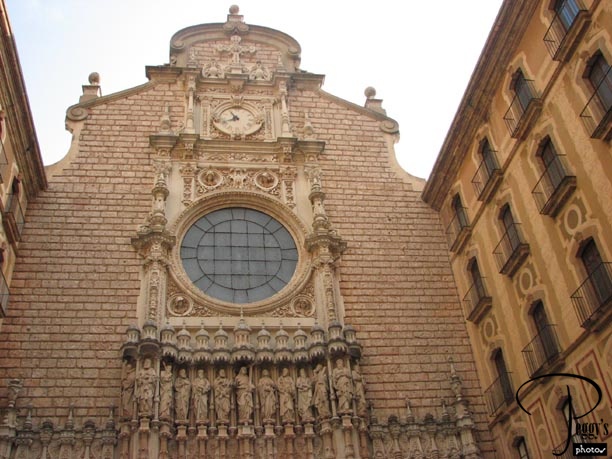
The front of the basilica.

The Montserrat Monastery
The Montserrat Monastery
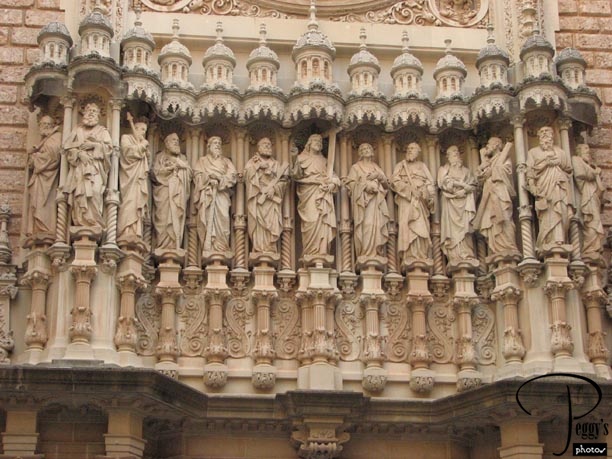
Close–up of the statues on the front of the basilica.

The Montserrat Monastery
The Montserrat Monastery
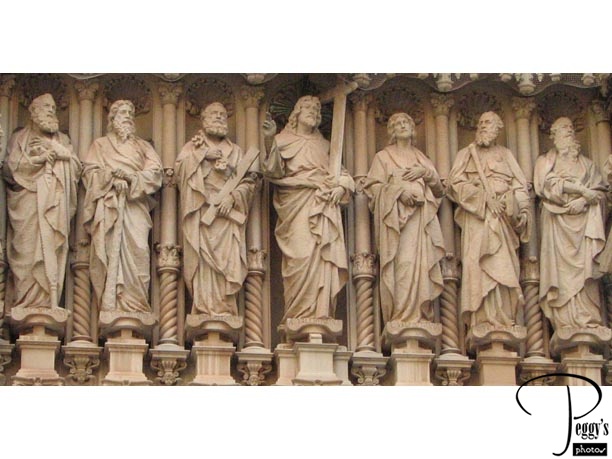
And even closer–up.

The Montserrat Monastery
The Montserrat Monastery
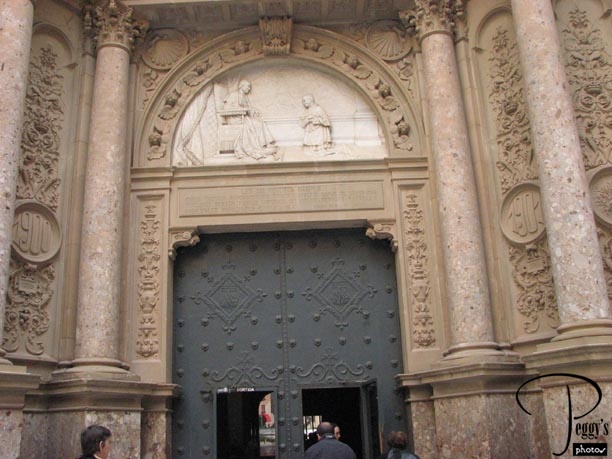
The door of the basilica. About here, a man came up to us and told us to follow him and to do so quickly. We were somewhat confused about this but it seemed like something that we should be doing, so we did. What he was doing was leading the last group of people, before the basilica closed for the next 1 1/2 hours, up to see La Morenta, the Black Virgin statue. This is why I wrote above that it is wise to get to Montserrat early on your own, before the basilica closes in the morning. If you wait to see La Morenta, the major attraction in Montserrat, until the basilica reopens, the tour groups have already arrived and you could wait hours in line to see the statue.

The Montserrat Monastery
The Montserrat Monastery
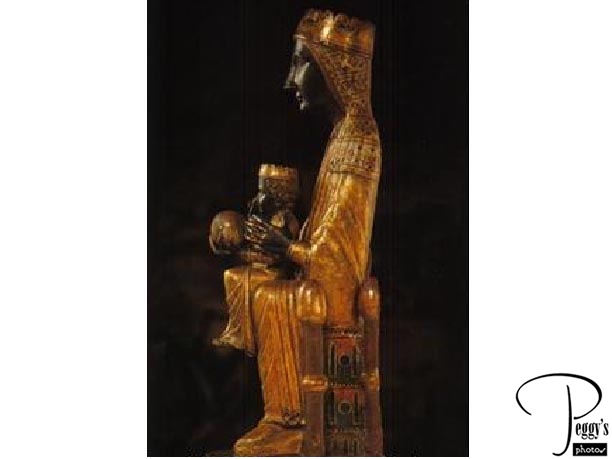
There are signs all over the basilica that no photographs are allowed, so I have scanned a postcard of La Morenta to put here. The Black Virgin is a wooden statue of the Madonna and Child with a smoke–blackened face. It is believed that the statue was made by St. Luke. It mysteriously turned up here in the 12th century. You are allowed to walk past her and touch an orb she is holding––the rest of the statue is behind glass. (Later on, I was able to take photos in the basilica and you’ll see more of La Morenta.)

The Montserrat Monastery
The Montserrat Monastery
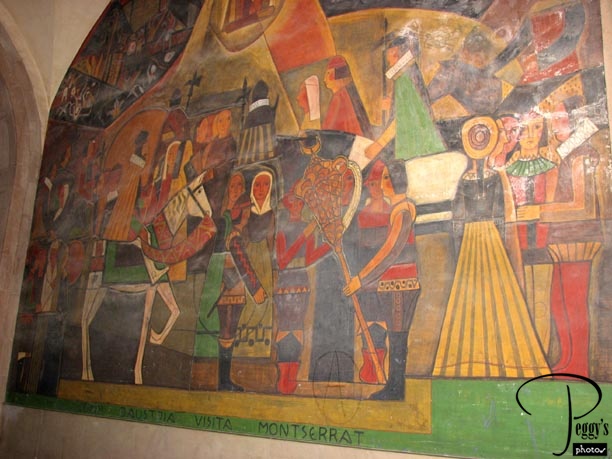
After walking past La Morenta, which also gave a view of the beautiful basilica below where she is placed, our route took us along the outside of the basilica. Mural seen along the way.

The Montserrat Monastery
The Montserrat Monastery
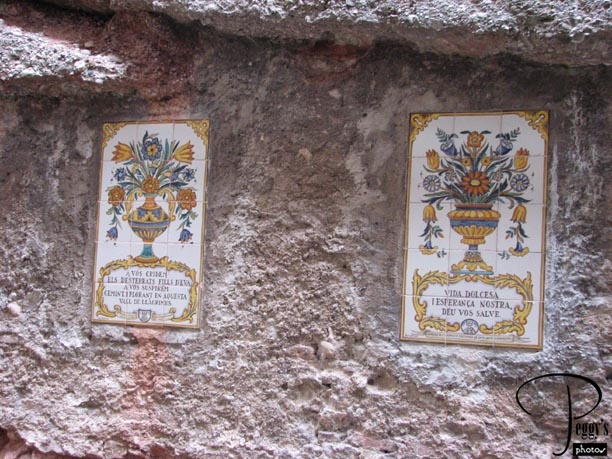
Tiled murals along the way.

The Montserrat Monastery
The Montserrat Monastery
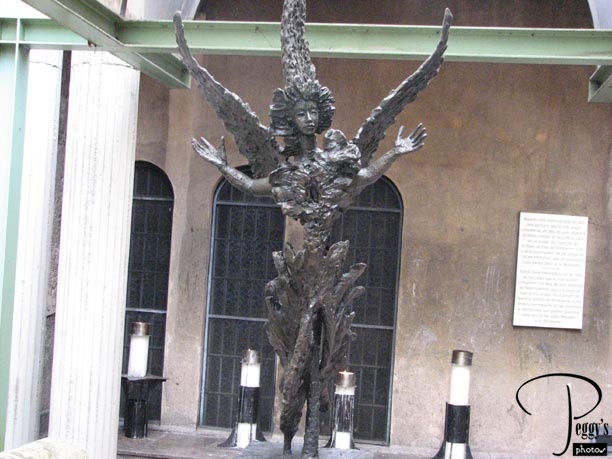
Statue.

The Montserrat Monastery
The Montserrat Monastery
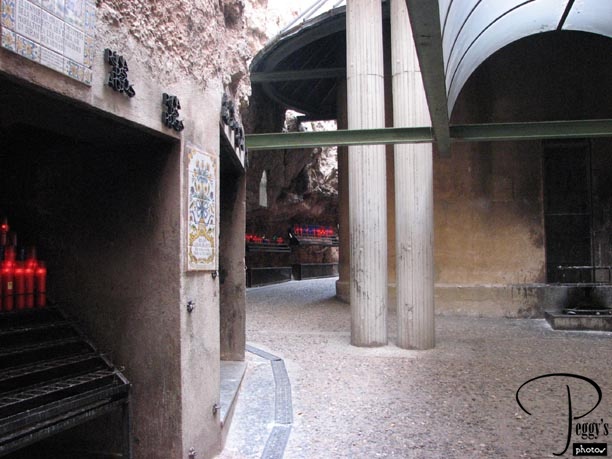
Passageway.

The Montserrat Monastery
The Montserrat Monastery
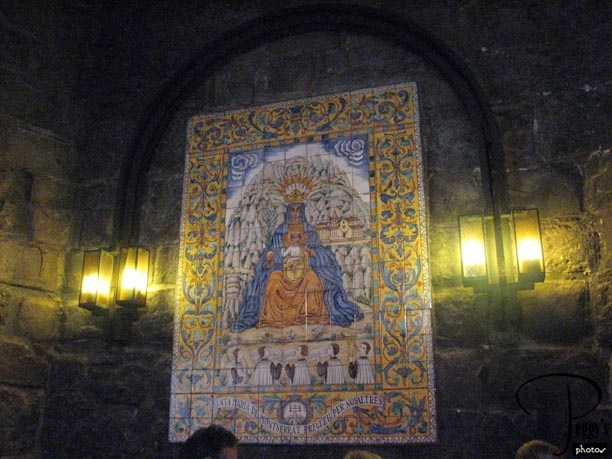
Another tiled mural.

The Montserrat Monastery
The Montserrat Monastery
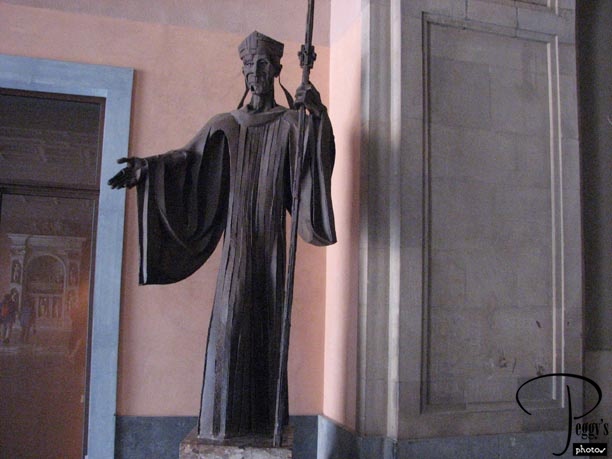
Another statue.

The Montserrat Monastery
The Montserrat Monastery
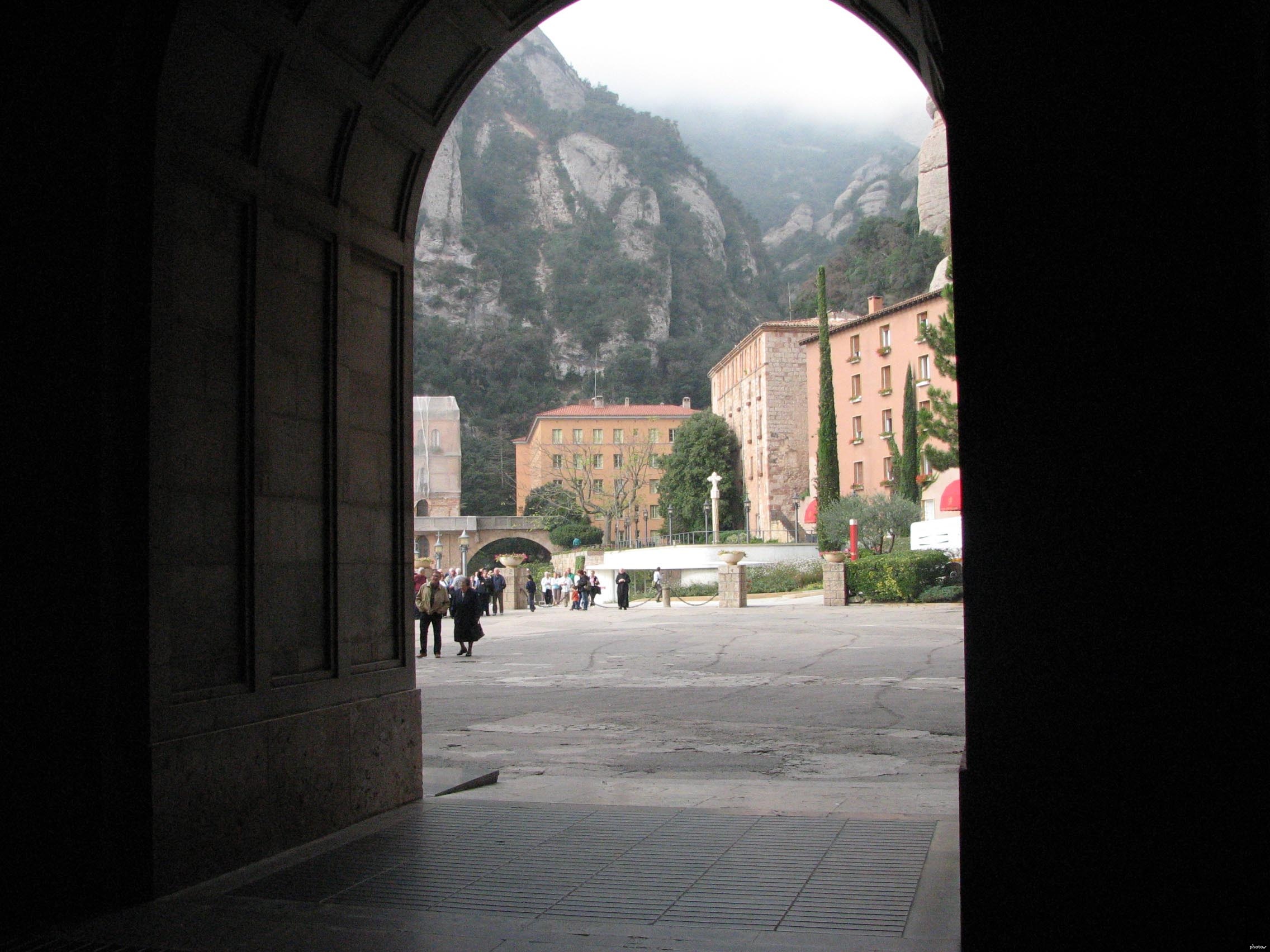
View of the plaza in front of the basilica through an arch.

The Montserrat Monastery
The Montserrat Monastery
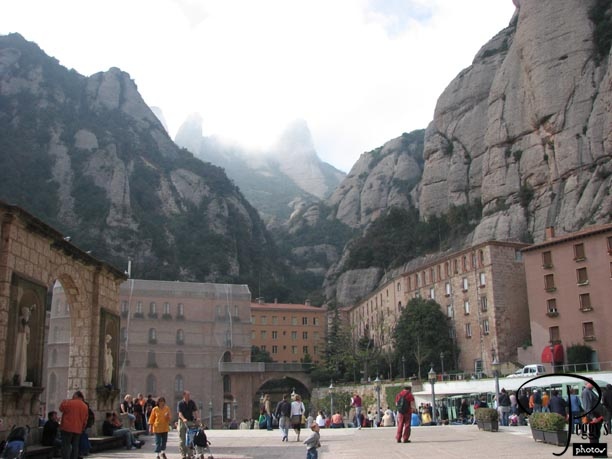
Another view of the plaza.

The Montserrat Monastery
The Montserrat Monastery
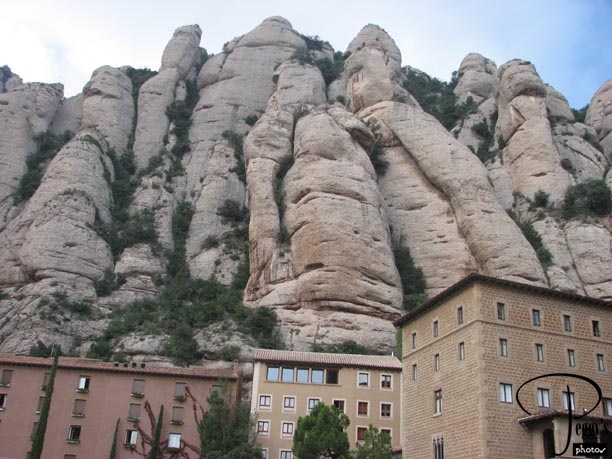
A view from the plaza of the rock formations.

The Montserrat Monastery
The Montserrat Monastery
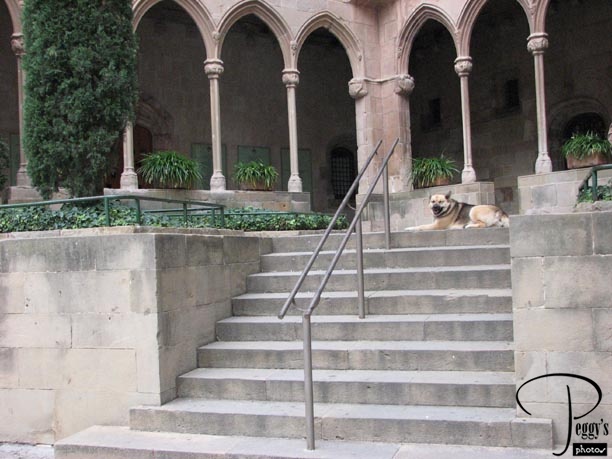
Off the plaza. I was not going to walk up there with that dog looking at me.

The Montserrat Monastery
The Montserrat Monastery
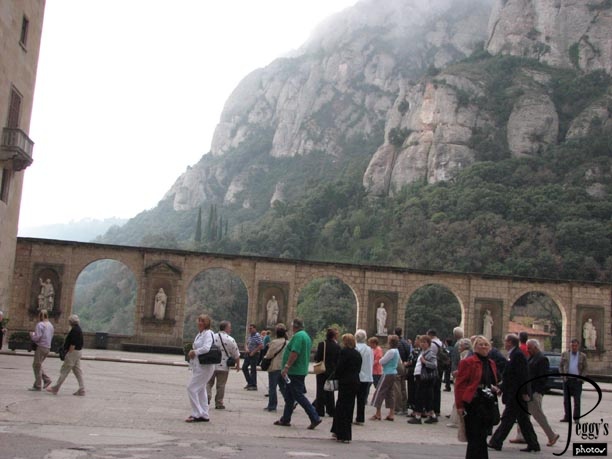
On the side of the plaza.

The Montserrat Monastery
The Montserrat Monastery
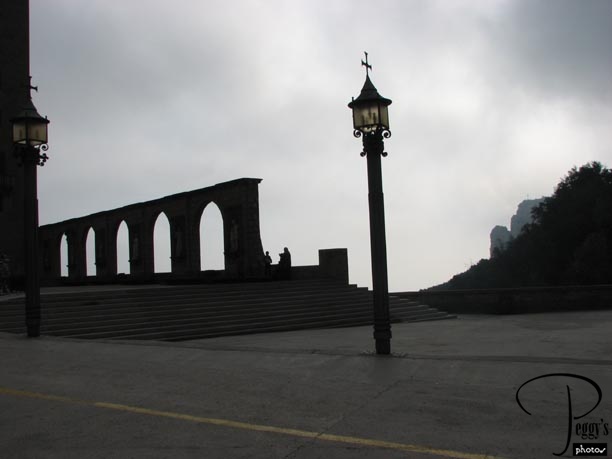
Looking backward.

The Montserrat Monastery
The Montserrat Monastery
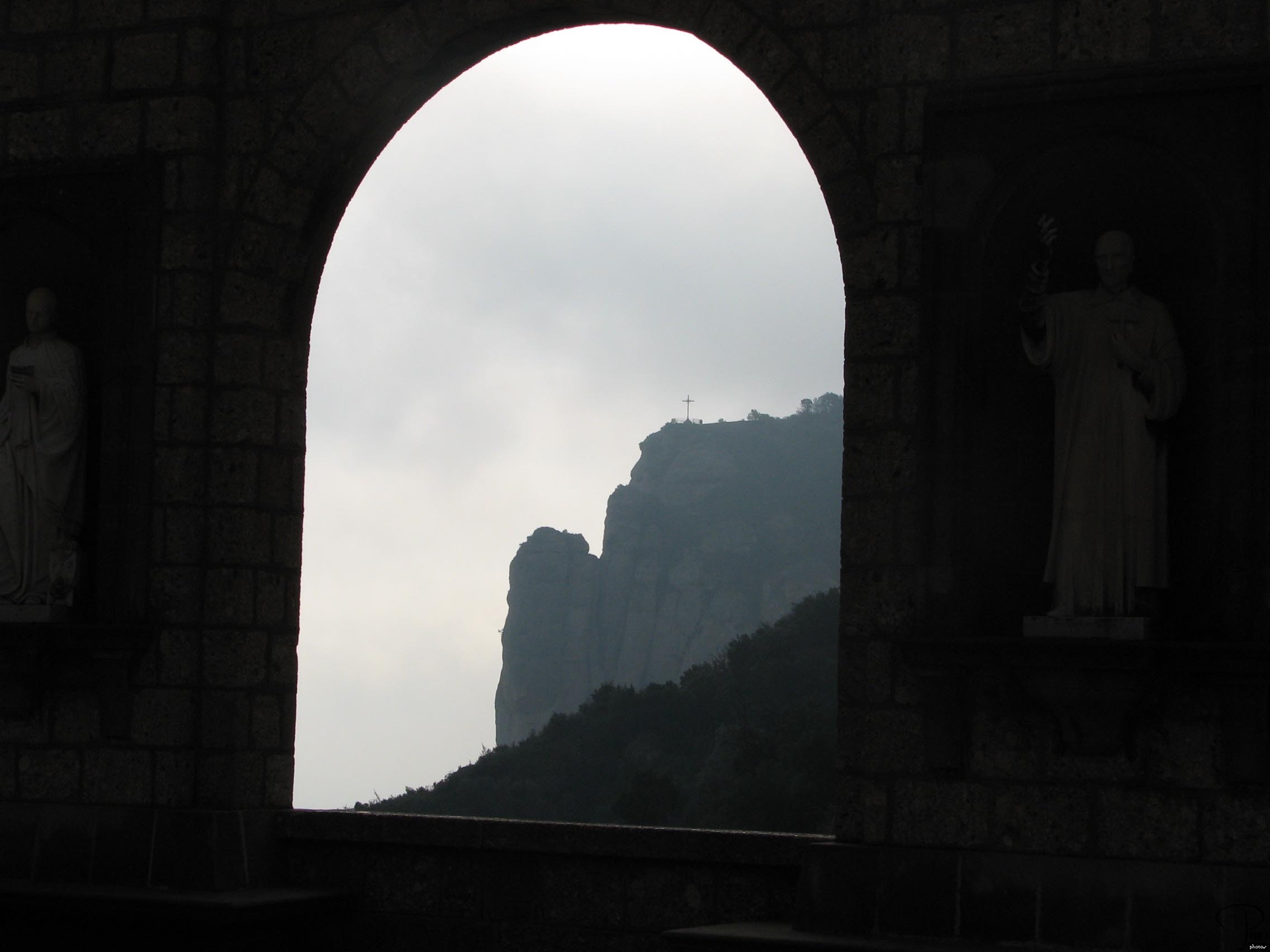
View from one of the arches.

The Montserrat Monastery
The Montserrat Monastery
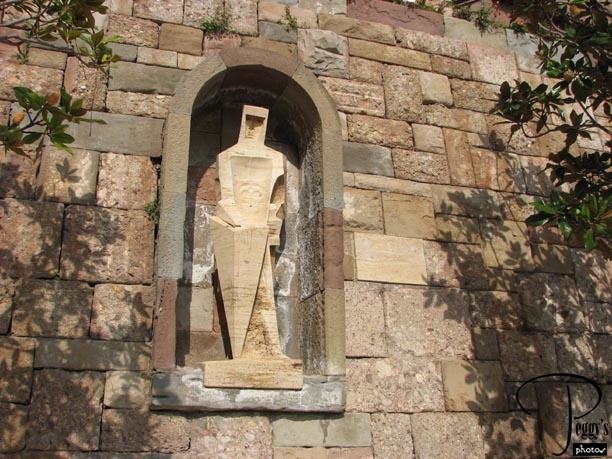
Statue of Sant Jordi in the plaza. Looks very Gaudi–like.

The Montserrat Monastery
The Montserrat Monastery
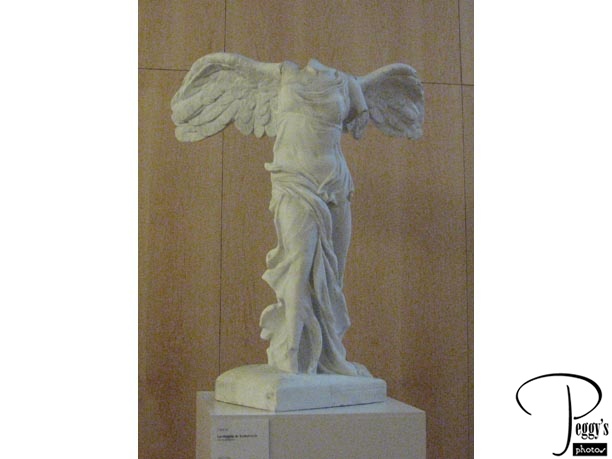
We decided next to visit the Museu de Montserrat, containing numerous paintings including some by El Greco, Monet, Picasso, and Dali, with a separate room with many Picasso posters. No photos were allowed in the museum except for this small replica of the Winged Victory of Samothrace (original in the Louve) outside the museum entrance.

The Montserrat Monastery
The Montserrat Monastery
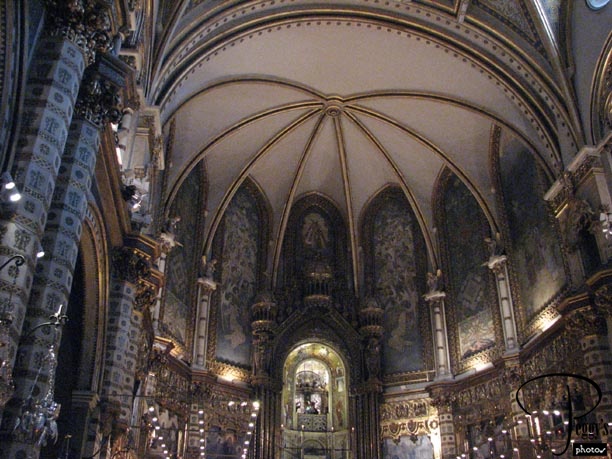
We next decided to take advantage of our free lunch ticket and headed to the cafeteria and filled up our trays. However, when we got to the register, we were told that it was too early to use our free ticket, but they let us have our food anyway. We wanted to eat early so that we wouldn’t be hungry when we went back to the basilica to await the 1 p.m. performance of the choir. There were still signs here not to take photos, but no one seemed to be paying attention to the signs. I did until I saw a priest directing a photographer in taking a perfect photo of him in the basilica. So I can now present a photo taken inside the beautiful 16th–century basilica.

The Montserrat Monastery
The Montserrat Monastery
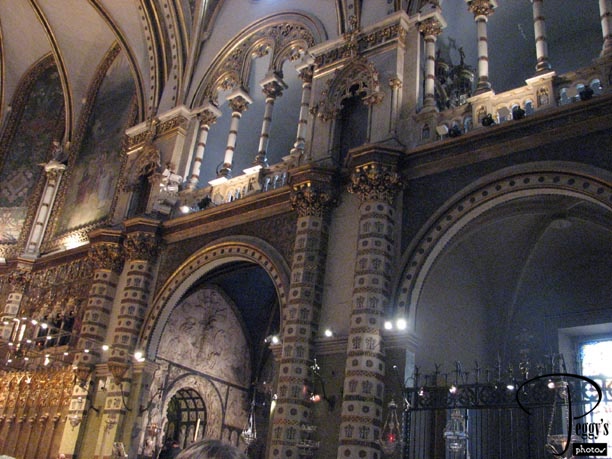
Another photo inside the basilica.

The Montserrat Monastery
The Montserrat Monastery

La Morenta.

The Montserrat Monastery
The Montserrat Monastery
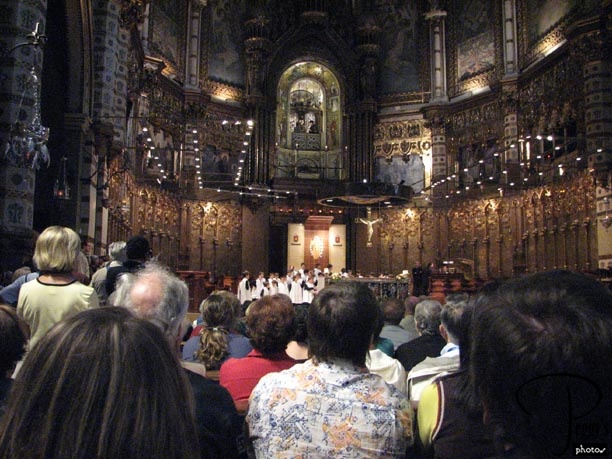
You can see the choir––the Montserrat Escolania––in the middle back of the photo. Fifty young boys, who live and study at the monastery, make up the choir. The Montserrat Escolania was established around the 11th century, making it the oldest music school in Europe. I have put a movie clip of the choir, also showing the inside of the basilica and the Black Virgin, on this website: Go to Movies, Western Europe, Spain, “”The Montserrat Escolania.”

The Montserrat Monastery
The Montserrat Monastery
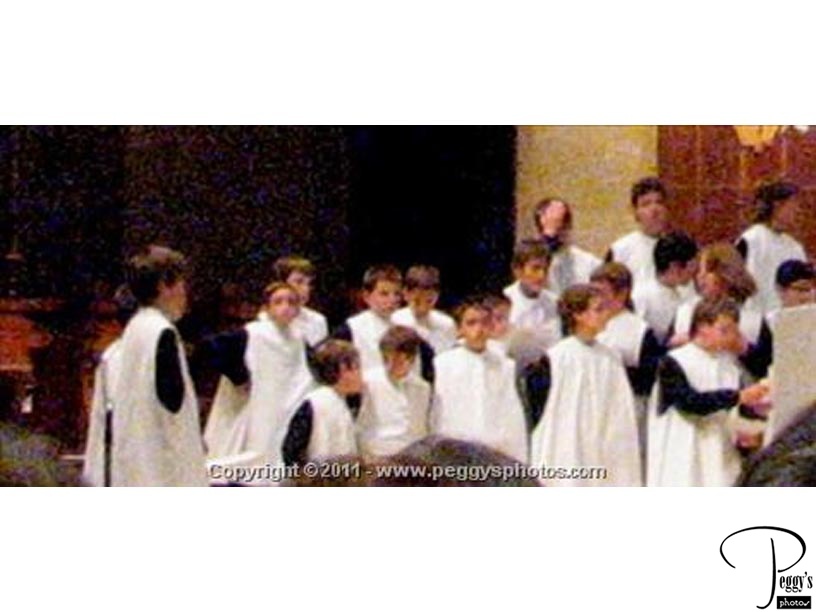
Blow–up of the choir from the last photo.

The Montserrat Monastery
The Montserrat Monastery
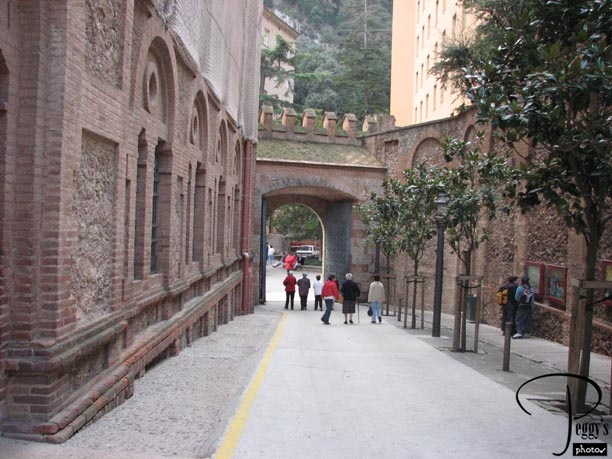
Walking back to the train station.

The Montserrat Monastery
The Montserrat Monastery
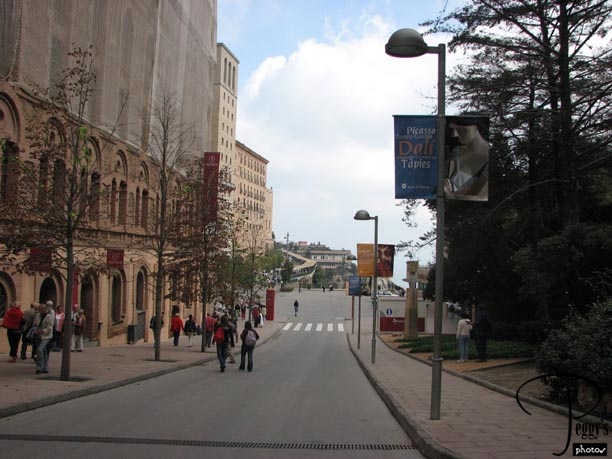
We stopped off for coffee and also to visit the souvenir stores here.

The Montserrat Monastery
The Montserrat Monastery
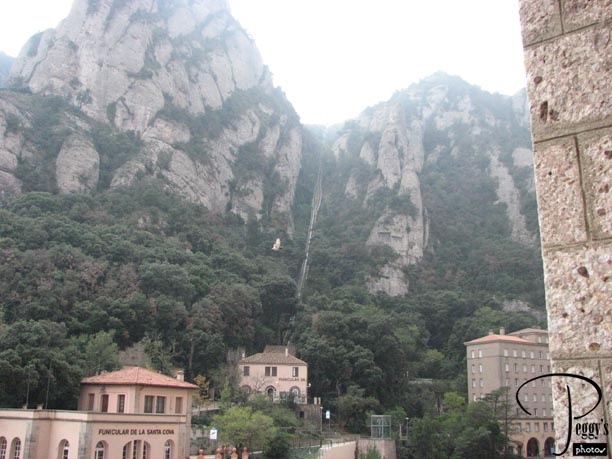
If you don’t want to go right back to Barcelona, you have your pick of two funiculars––the Sant Joan funicular, which will take you up 820 feet above the monastery––then it is a 20–minute walk to the Sant Joan Chapel; and the Santa Cova funicular, which will take you down to within a 20–minute hike to the Santa Cova (Holy Cave). This is where La Moreneta was hidden from the Moors.

The Montserrat Monastery
The Montserrat Monastery
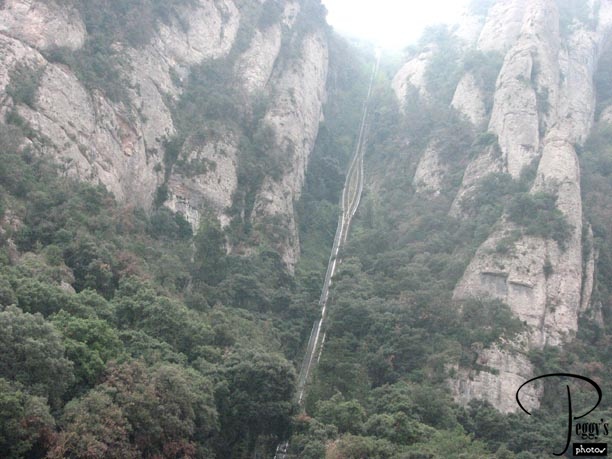
Close–up of the Sant Joan funicular. We didn’t take either one of the funiculars. If you want to have more time at the Montserrat Monastery, there are overnight accommodations here.

The Montserrat Monastery
The Montserrat Monastery
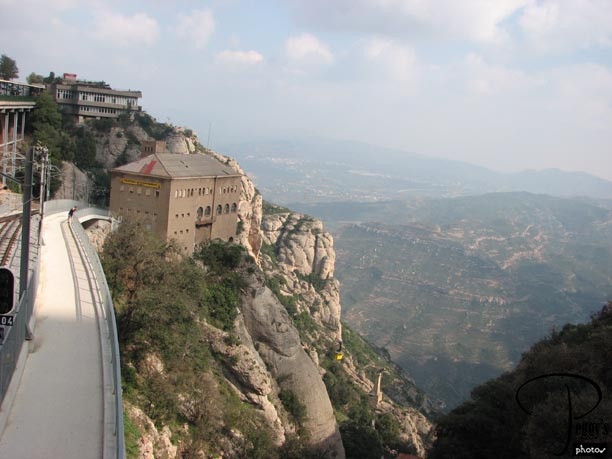
You have your choice of returning to the train station in the valley below either by the Cremallera mountain train or by the cable car. You can make out the cable car in the middle of this photo.

The Montserrat Monastery
The Montserrat Monastery
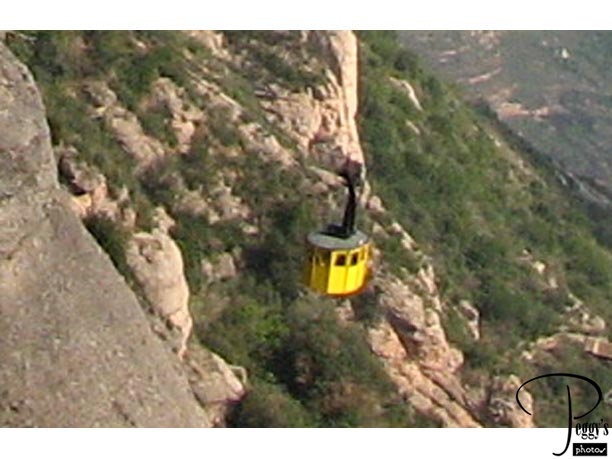
Close–up of the cable car.

The Montserrat Monastery
The Montserrat Monastery
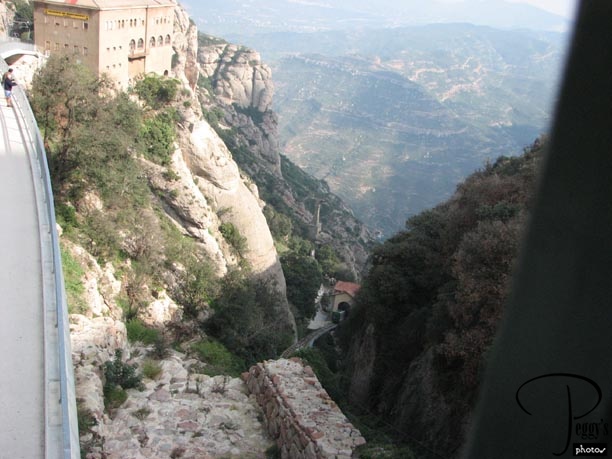
In this photo, you can make out the Cremallera mountain train coming up the mountain.

The Montserrat Monastery
The Montserrat Monastery
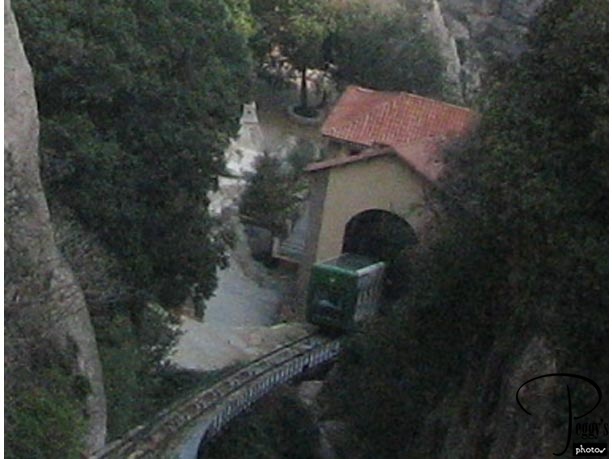
Close–up of the train.

The Montserrat Monastery
The Montserrat Monastery
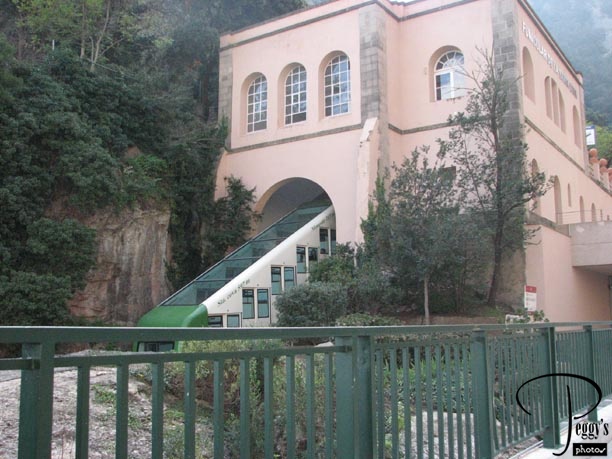
The train pulling into the monastery station. The mountain train was enough thrill for Merrie and me and we took it down to Montserrat. Some of the trains down are through trains, meaning that after they stop at the first station at the bottom of the mountain, then they continue on to the station where you pick up the train to Barcelona. We didn’t realize this until the train we took down dropped us off at the first station and then we had to wait awhile for a through train to arrive.

The Montserrat Monastery
The Montserrat Monastery
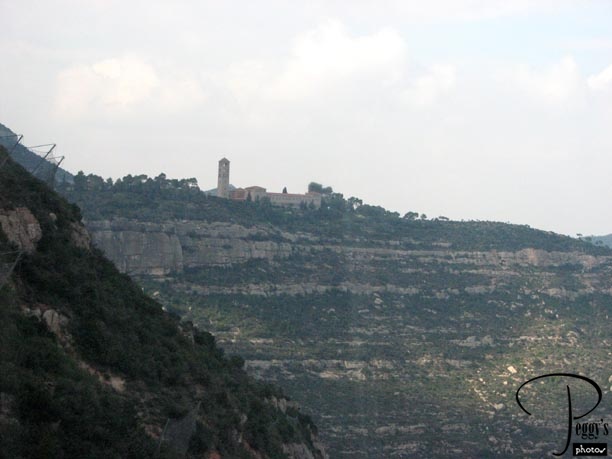
Probably one of the hermitages on the mountain, as seen on the train going down the mountain.

The Montserrat Monastery
Montserrat
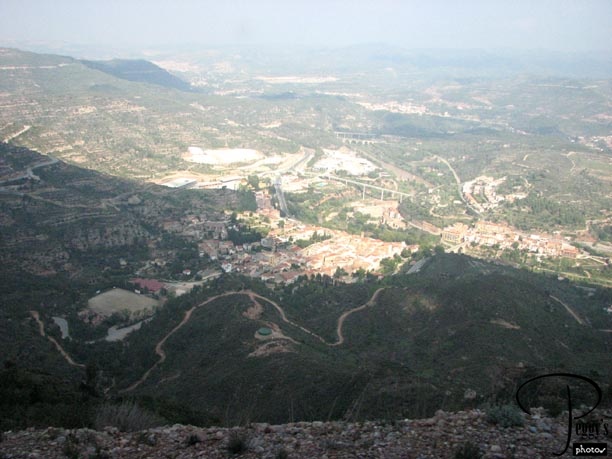
View of the valley from the train.

Montserrat
Montserrat
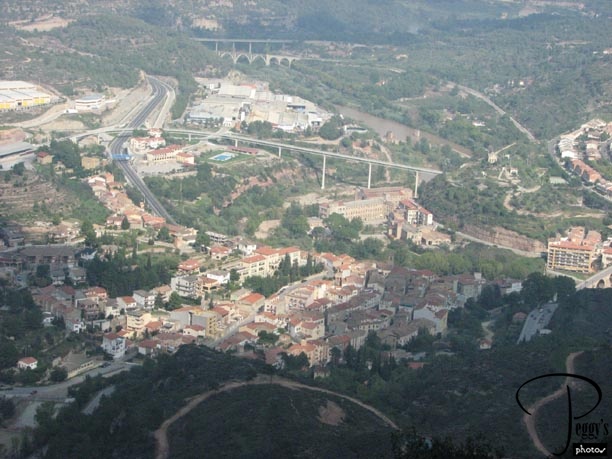
Closer–up view of the valley.

Montserrat
Montserrat
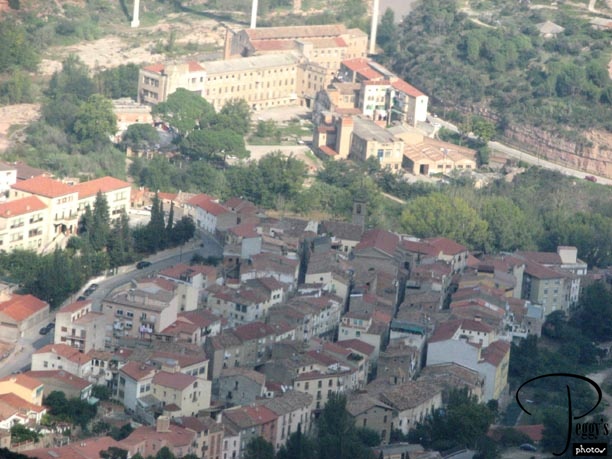
And a closer–up view.

Montserrat
Placa Espanya
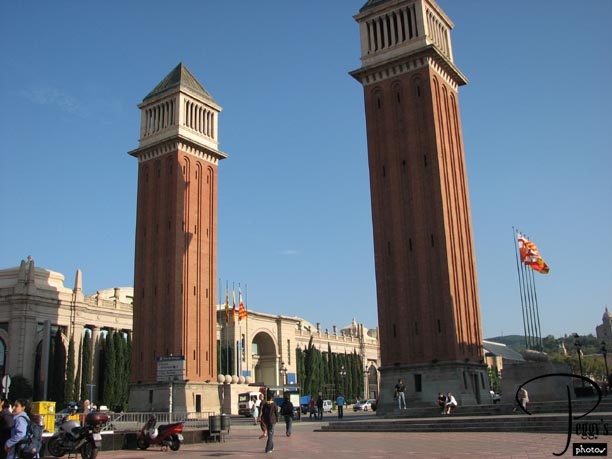
We arrived back in Barcelona at the Placa Espanya station about 5 p.m. I took these photos outside the station. These two red brick Venetian–style campaniles served as the grand entrance to Barcelona’s 1929 International Exhibition.

Placa Espanya
Placa Espanya
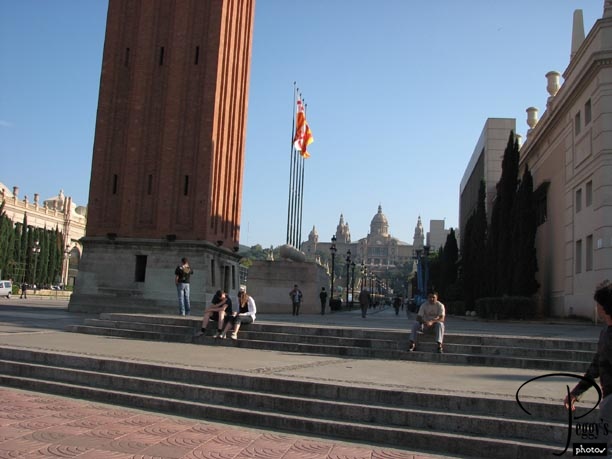
View of the Palau Nacional (National Palace) which was the main building of the 1929 International Exhibition. The Museu Nacional d’Art de Catalunya is housed inside it.

Placa Espanya
Placa Espanya
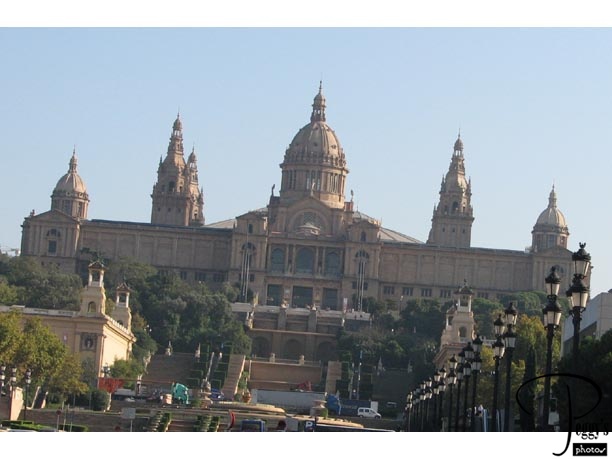
A bit crooked, but a closer–up view of the Palau Nacional.

Placa Espanya
Placa Espanya
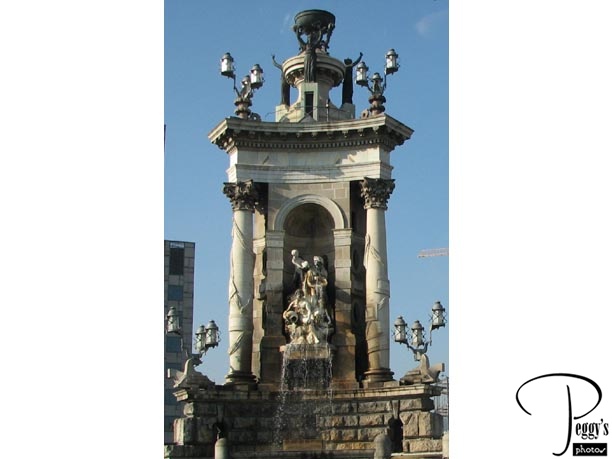
Statue in the middle of the traffic circle at Placa Espanya.

Placa Espanya
Placa Espanya
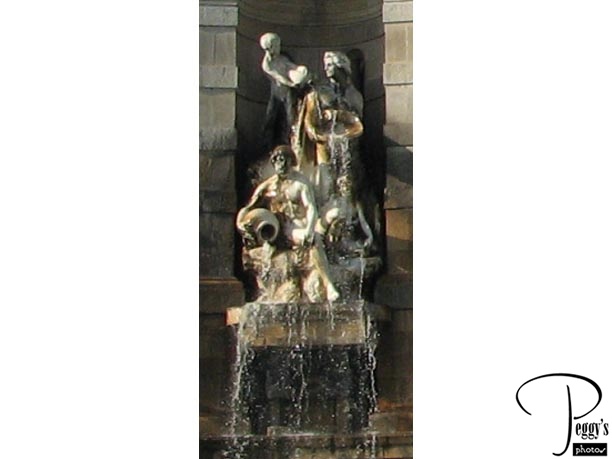
Close–up of the statue.

Placa Espanya
La Boqueria
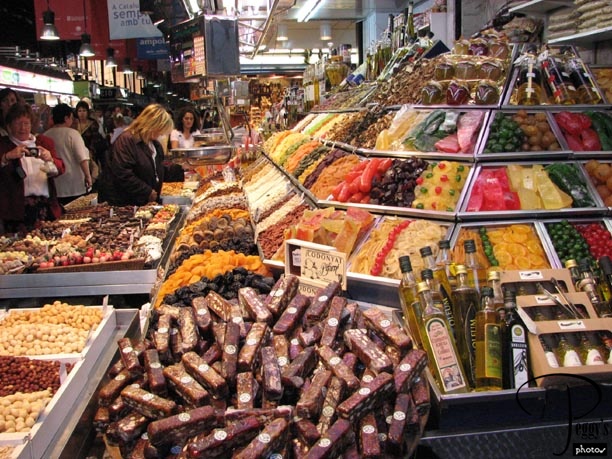
We were too tired to walk back down to the metro station and figure out how to get back to our hotel, so we splurged and took a taxi back. We still hadn’t been to La Boqueria, the huge produce market on Las Ramblas, so we headed there. I have already put my photos that I took there on this website on a slide show: Go to Slide Shows, Western Europe, Spain–1, “Baarcelona: Las Ramblas.”

La Boqueria
Placa Reial
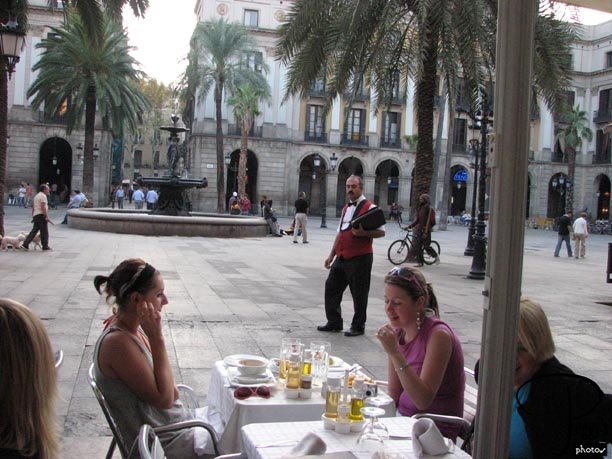
We decided not to eat our dinner at La Boqueria and went instead to eat at Placa Reial, almost across from our hotel. My meal wasn’t so great, but the sangria and the people watching were. Tonight we had to pack up as tomorrow we would be flying from Barcelona back to Madrid. Again, we were picked up three hours before our flight time of 10:30 a.m. for our 1–hour 10–minute flight to Madrid. When we arrived in Madrid, the baggage return was not where we landed but, what seemed like, a mile walk to another terminal. But our driver was at that terminal to meet us and drove us to our hotel. It was raining in Madrid, the first rain that we had on our trip. I was hoping in our time left in Madrid to visit something that I missed when we were here at the beginning of our trip. However, with the rain and a cold that was getting worse that I must have caught riding around on top of the Hop–on Hop–off bus on that chilly Barcelona night, I just stayed in my hotel room the entire day and night and had room–service pizza. Merrie went out shopping when the rain let up. The next morning, my driver picked me up at 4 a.m. for my 7 a.m. flight from Madrid to Munich, Germany. None of the cafes at the airport were open, so I got my breakfast out of machines. We left Madrid late because of fog at the Munich airport and I didn’t think that I would be in time to catch my Lufthansa flight from Munich to Los Angeles. But I did make it to the gate, with my arm aching from carrying a heavy large straw handbag with all my new souvenirs in it, at one minute before flight time, even though before reaching my gate I had run a short distance in the wrong direction. Actually, I was not the last one on the plane as Lufthansa was waiting for those of us who had arrived late. Then an 11–hour flight to Los Angeles and I felt very glad to be home when we landed in LA.
